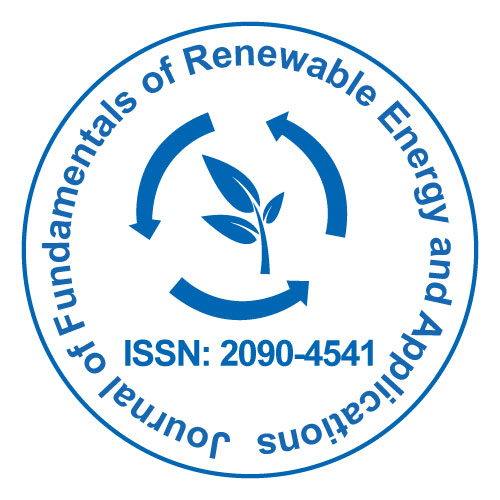
Journal of Fundamentals of Renewable Energy and Applications
Open Access
ISSN: 2090-4541
+44 1300 500008

ISSN: 2090-4541
+44 1300 500008
Perspective - (2024)Volume 14, Issue 3
Solar Photovoltaic (PV) technology has emerged as a cornerstone of sustainable development, providing clean, renewable energy that can significantly mitigate the impacts of climate change. Solar PV technology not only addresses energy needs but also contributes to environmental sustainability, economic growth and social equity. This article explains the principles of solar photovoltaic technology, its applications and its key role in promoting sustainable development. Solar photovoltaic technology converts sunlight directly into electricity using semiconductor materials, typically silicon-based cells. This process is known as the photovoltaic effect, which is the fundamental principle behind solar panels.
PV systems are available in off-grid, hybrid and grid-tied forms. Grid-tied systems connect directly to the electrical grid, allowing for the sale of excess electricity back to the grid. Off-grid systems provide energy independence, especially in remote areas, while hybrid systems combine solar energy with other power sources, such as wind or diesel generators, to enhance reliability. By substituting fossil fuels with solar energy, countries can lower their carbon footprint and contribute to global efforts to combat climate change. Studies estimate that a large-scale transition to solar energy could significantly reduce annual CO2 emissions.
Unlike fossil fuel extraction and processing, solar energy generation requires minimal land and water. Furthermore, solar power generation uses negligible water compared to conventional energy sources, making it a water-efficient option, essential in water-scarce regions. Deploying solar PV systems can lead to reduced habitat destruction compared to traditional energy sources. By using brownfield sites for solar farms or integrating PV into urban architecture, the impact on natural ecosystems can be minimized.
According to the International Renewable Energy Agency (IRENA), millions of jobs have been created worldwide in the renewable energy sector, with solar PV accounting for a substantial share. This trend is expected to continue as solar installations increase globally. This shift not only stabilizes energy prices but also promotes local economies by keeping energy expenditure within the country. The cost of solar PV technology has dropped dramatically over the past decade, making it one of the most affordable sources of electricity. Advances in technology, economies of scale in manufacturing and increased competition have contributed to these cost reductions, enabling broader adoption across various sectors. Solar PV technology has opened new avenues for investment. Governments and private investors are increasingly funding solar projects, attracted by the long-term stability and profitability of renewable energy sources. These investments stimulate economic growth and foster technological innovation.
Off-grid solar solutions can empower communities by enabling access to essential services such as healthcare, education and clean water. The availability of electricity allows for improved quality of life and fosters local economic development. Access to energy can empower women and marginalized communities by providing opportunities for income generation, education and social participation. Solar energy projects often involve community engagement, ensuring that benefits are equitably distributed. Transitioning to solar energy can improve public health by reducing air pollution associated with fossil fuel combustion. Cleaner air leads to fewer respiratory illnesses and better overall health outcomes, reducing healthcare costs and enhancing productivity.
Solar photovoltaic technology is a key component of the global transition towards sustainable development. Despite the numerous benefits of solar PV technology, several challenges must be addressed to fully realize its potential for sustainable development. Solar energy generation is dependent on sunlight, leading to variability in power output. To address this challenge, advancements in energy storage technologies, such as batteries, are essential. Innovations such as bifacial solar panels, perovskite solar cells and floating solar farms are promising advancements that can enhance the viability of solar energy. Effective government policies and regulatory frameworks are important for promoting solar energy adoption. Supportive policies can include tax incentives, feed-in tariffs and renewable energy standards that encourage investment in solar PV technology.
Citation: Blake D (2024). Solar Photovoltaic Technology and its Role in Sustainable Development. J Fundam Renewable Energy Appl. 14:351.
Received: 02-Sep-2024, Manuscript No. JFRA-24-34389; Editor assigned: 04-Sep-2024, Pre QC No. JFRA-24-34389 (PQ); Reviewed: 18-Sep-2024, QC No. JFRA-24-34389; Revised: 25-Sep-2024, Manuscript No. JFRA-24-34389 (R); Published: 02-Oct-2024 , DOI: 10.35248/2090-4541.24.14.351
Copyright: © 2024 Blake D. This is an open-access article distributed under the terms of the Creative Commons Attribution License, which permits unrestricted use, distribution and reproduction in any medium, provided the original author and source are credited.